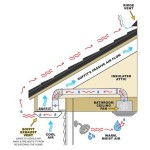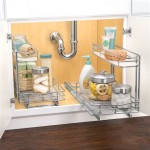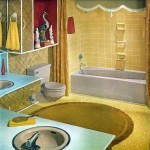Bathroom Faucet Not Draining
A non-draining bathroom faucet can be a frustrating and inconvenient problem. Standing water in the sink basin disrupts daily routines and can indicate underlying plumbing issues. This article will explore the common causes of this problem and offer practical solutions for homeowners.
Common Causes of a Clogged Bathroom Faucet
Several factors can contribute to a slow or completely blocked bathroom faucet drain. Identifying the root cause is crucial for effective troubleshooting.
*
Hair Clogs:
Hair is a frequent culprit in bathroom sink clogs. It accumulates over time, trapping soap scum and other debris, eventually forming a stubborn blockage. *Soap Scum Buildup:
Soap residue combines with minerals in hard water to create a sticky film that clings to the drainpipe's interior, restricting water flow. *Foreign Objects:
Small items like jewelry, toothpaste caps, or children's toys can accidentally fall into the drain and obstruct the passage of water. *Mineral Deposits:
Hard water contains high mineral content, which can accumulate within the pipes, narrowing the waterway and impeding drainage. *Clogged P-Trap:
The P-trap, the curved section of pipe beneath the sink, is designed to trap debris and prevent sewer gases from entering the bathroom. However, it can also become clogged with debris. *Vent Pipe Issues:
A blocked vent pipe can create negative pressure in the drainage system, slowing down or completely stopping the flow of water. *Damaged Pipes:
Although less common, cracks or damage in the drainpipes can restrict water flow and lead to drainage issues.Troubleshooting a Slow or Clogged Bathroom Faucet Drain
Before calling a plumber, several DIY methods can often resolve the issue.
*
Check the Stopper:
The sink stopper can sometimes become clogged with hair and debris. Remove the stopper and clean it thoroughly. *Boiling Water:
Pouring boiling water down the drain can melt soap scum and dislodge minor clogs. *Baking Soda and Vinegar:
A mixture of baking soda and vinegar creates a fizzing action that can help break down clogs. Pour one cup of baking soda down the drain, followed by one cup of vinegar. Let the mixture fizz for 30 minutes before flushing with hot water. *Plunger:
A sink plunger can create suction to dislodge blockages. Ensure a tight seal around the drain opening and plunge vigorously. *Remove and Clean the P-Trap:
Place a bucket under the P-trap to catch water. Carefully loosen the slip nuts connecting the P-trap to the drainpipes. Remove the P-trap and clean out any debris. Reassemble the P-trap, ensuring the nuts are tightened securely.Preventing Future Clogs
Implementing preventative measures can significantly reduce the likelihood of future clogs.
*
Hair Catcher:
Installing a hair catcher over the drain can prevent hair from entering the pipes. *Regular Cleaning:
Flush the drain with boiling water weekly to dissolve soap scum buildup. *Avoid Pouring Grease Down the Drain:
Grease solidifies in pipes and contributes to clogs. Dispose of grease in a separate container. *Flush with Cold Water After Using Soap:
Cold water helps prevent soap scum from sticking to the pipes. *Periodically Check and Clean the P-Trap:
Regularly inspecting and cleaning the P-Trap can prevent debris buildup.When to Call a Plumber
While DIY methods can often resolve minor clogs, some situations warrant professional assistance.
*
Persistent Clogs:
If the clog persists after attempting various DIY solutions, a plumber can utilize specialized tools and expertise to identify and resolve the issue. *Multiple Clogged Drains:
Simultaneous clogs in multiple drains can indicate a more significant plumbing problem, such as a blocked main drain or vent stack. *Sewer Odor:
A foul odor emanating from the drain can signify a sewer line issue requiring professional attention. *Slow Drains Throughout the House:
Widespread slow drainage suggests a systemic problem within the plumbing system.Tools for Addressing Clogged Drains
Having the right tools on hand can make tackling drain clogs easier and more effective.
*
Plunger:
A cup plunger is specifically designed for sinks and tubs. *Drain Snake:
A drain snake, also known as an auger, is a flexible tool that can reach deeper into pipes to dislodge stubborn clogs. *Slip Joint Pliers:
These pliers are essential for loosening and tightening the slip nuts on the P-trap. *Bucket:
A bucket is necessary for catching water when removing the P-trap.Maintaining Your Drains
Regular maintenance is key to preventing clogs and ensuring the longevity of your plumbing system.
*
Avoid Chemical Drain Cleaners:
While chemical drain cleaners can sometimes dislodge clogs, they can also damage pipes over time. Natural solutions are generally preferred. *Regularly Inspect Pipes for Leaks:
Addressing leaks promptly can prevent more significant plumbing problems in the future. *Consider Water Softener:
If you have hard water, installing a water softener can reduce mineral buildup in pipes.
How To Fix A Bathroom Sink That Won T Drain Bfp Bay Area

How To Fix A Bathroom Sink Drain Stopper 4 Easy Solutions

Why Is My Sink Not Draining All You Need To Know Checkatrade

My Pop Up Drain Is Not Draining Water

How To Unclog A Bathroom Sink The Home Depot

Bathroom Sink Drain Stopper Not Working

My Pop Up Drain Is Not Draining Water

5 Things To Try If You Have A Noisy Shower Or Bathroom Sink Drain

How To Replace Or Maintain A Sink Pop Up Drain Assembly

How To Unclog A Bathroom Sink The Home Depot
Related Posts







